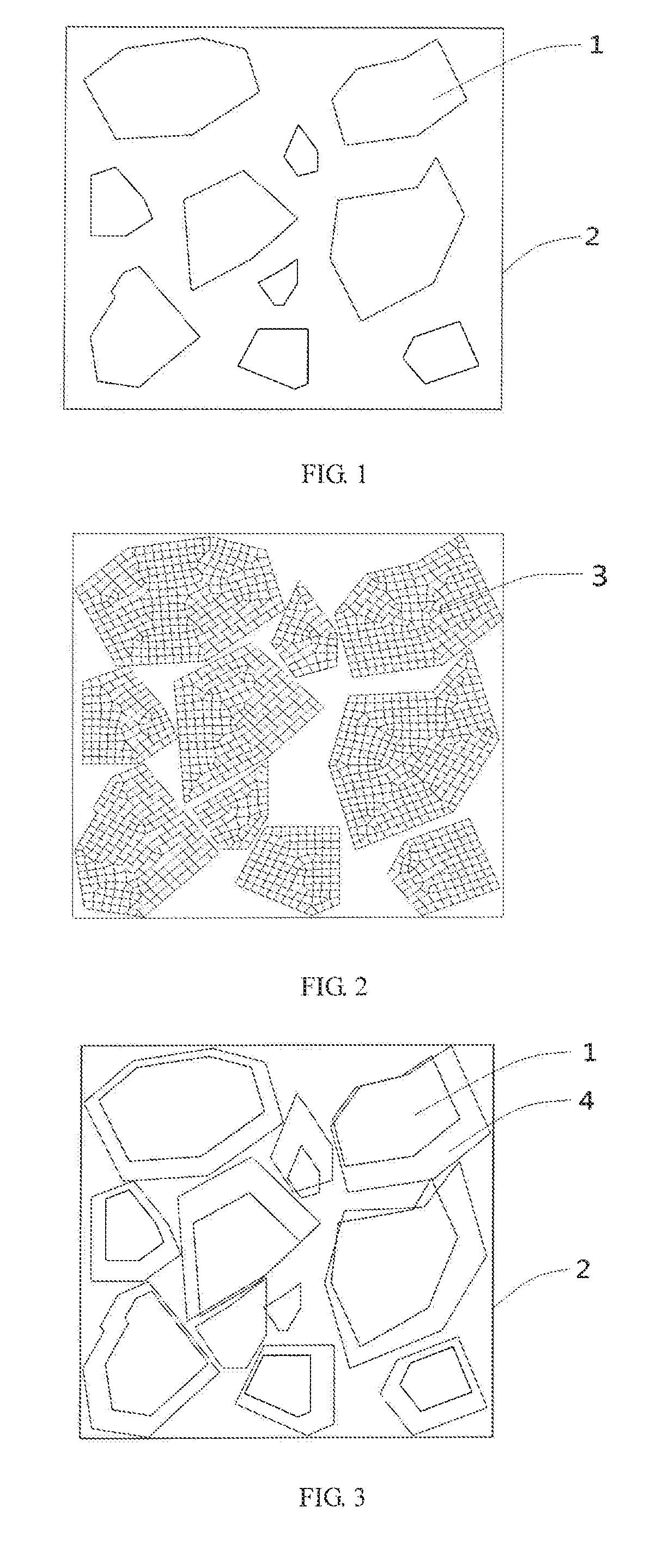Modeling method for high-density discrete particle multiphase system
a discrete particle, multi-phase technology, applied in the field of computational materials science, can solve the problems of inability to generate a meso-scale structural model, difficult to place all the particles into the limited model space, and low particle packing density, and achieve the effect of wide adaptability and high calculation efficiency
- Summary
- Abstract
- Description
- Claims
- Application Information
AI Technical Summary
Benefits of technology
Problems solved by technology
Method used
Image
Examples
embodiment 1
[0033]A modeling method for a high-density two-dimensional discrete particle multiphase system includes the following steps:
(1) drawing up the contour shape and size of a model, that is, determining a modeling space and a boundary thereof, e.g., a model boundary in FIG. 1, where 2 is a model boundary;
(2) generating a compact model of each particle according to a predetermined grading, e.g., a compact model of each particle in FIG. 1, where 1 is a particle compact model;
(3) dividing the compact model of each particle into two-dimensional plane elements, and assigning thermoelastic material properties to the plane elements;
(4) dividing the model boundary into two-dimensional plane elements, and assigning temperature-independent rigid material properties to the two-dimensional plane elements;
(5) defining the contact between the particles and between the particles and the model boundary to be surface-to-surface contact, so that they do not penetrate each other; and
(6) applying a tempera...
embodiment 2
[0036]A modeling method for a three-dimensional meso-structure of a high-density particle reinforced composite material includes the following steps:
(1) drawing up the contour shape and size of a model, that is, determining a modeling space and a boundary thereof;
(2) drawing up the volume sum of particles within each size range according to a predetermined grading, that is, setting the volume sum of particle phases within a size range of i to j to be V(i-j);
(3) randomly obtaining a plurality of particle models within a size range of i×α to j×α in the modeling space, wherein α=0.6, the volume sum of the particle models is V(i-j)×β, each particle does not interfere with the surrounding particles, and a compact model of each particle within the size range of i to j is obtained;
the method of obtaining a plurality of particle models within the size range of i×α to j×α, including the following steps:
a, randomly generating a point within the modeling space, and generating a sphere having t...
PUM
| Property | Measurement | Unit |
|---|---|---|
| density | aaaaa | aaaaa |
| size | aaaaa | aaaaa |
| volume sum | aaaaa | aaaaa |
Abstract
Description
Claims
Application Information
 Login to View More
Login to View More - R&D
- Intellectual Property
- Life Sciences
- Materials
- Tech Scout
- Unparalleled Data Quality
- Higher Quality Content
- 60% Fewer Hallucinations
Browse by: Latest US Patents, China's latest patents, Technical Efficacy Thesaurus, Application Domain, Technology Topic, Popular Technical Reports.
© 2025 PatSnap. All rights reserved.Legal|Privacy policy|Modern Slavery Act Transparency Statement|Sitemap|About US| Contact US: help@patsnap.com

